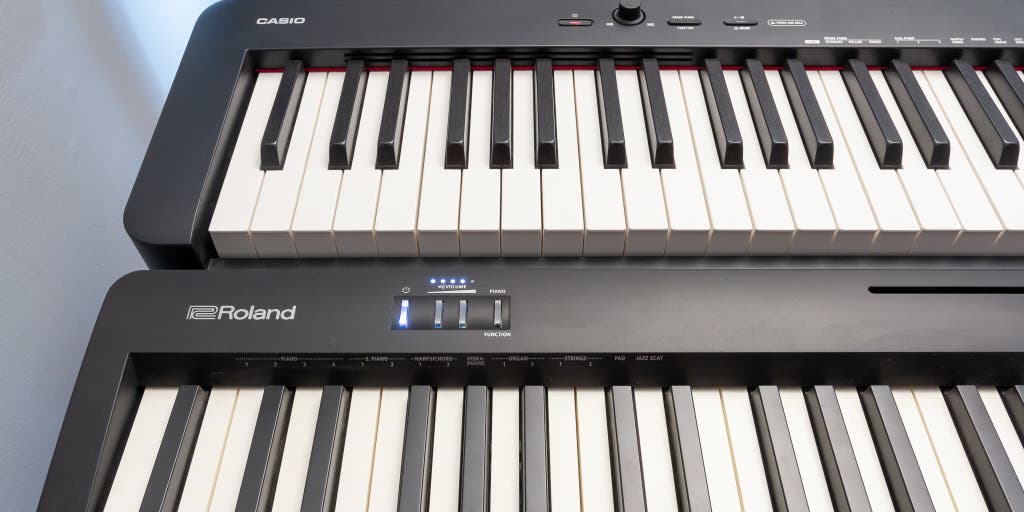1. Introduction
The piano is a classic and timeless instrument that has been around for centuries, but it can be intimidating and difficult to learn. That’s why the Artesia Children’s Digital Piano is such a great option for children who want to learn the basics of playing the piano without the pressure of mastering it right away. The Artesia Children’s Digital Piano is designed with younger players in mind, providing them with an easy-to-use, fun way to explore music.
2. Why Artesia Children’s Digital Piano?
The Artesia Children’s Digital Piano allows children to explore music in a fun and accessible way. It is designed with younger players in mind, making it easier for them to learn the basics of playing the piano without feeling overwhelmed or discouraged by the complexity of traditional pianos. The Artesia Children’s Digital Piano also allows parents to monitor their child’s progress and provide guidance as needed.
3. Features of the Artesia Children’s Digital Piano
The Artesia Children’s Digital Piano features 61 full-sized keys, 128 built-in rhythms, 10 demo songs, eight instrument sounds (including grand piano), record/playback functions, metronome and transpose functions, headphone jack for silent practice sessions and MIDI connectivity for use with computers or other MIDI devices. The keyboard also includes a USB port so you can connect it directly to your computer or laptop for even more options when it comes to learning and exploring music.
4. Benefits of the Artesia Children’s Digital Piano
One of the greatest benefits of investing in an Artesia Children’s Digital Piano is that it will help your child develop a strong foundation in music theory and performance skills from an early age. This digital piano also provides endless opportunities for creativity as your child can explore different sounds and rhythms while learning how to play songs they enjoy listening to on the radio or online streaming services like Spotify or Apple Music. Additionally, this digital piano makes practicing fun as your child can record their progress and listen back to what they have learned so far!
5. The Different Models of the Artesia Children’s Digital Piano
The Artesia Children’s Digital Pianos come in three models: The AP-88H 88-key Hammer Action Keyboard; the AP-76H 76-key Hammer Action Keyboard; and the AP-60H 61-key Hammer Action Keyboard. All three models feature full sized keys that are easy for small hands to play on while still providing enough resistance for proper technique development as they grow more experienced at playing this instrument over time. Additionally, all three models are equipped with 128 built-in rhythms allowing your child plenty of room to explore different styles of music while learning how to play this classic instrument!
6. What to Look for When Buying an Artesia Children’s Digital Piano
When buying an artesia children’s digital piano there are several factors you should consider before making your purchase: size (the larger keyboards may be too big if you don’t have much space); number of keys (the higher number will give your child more range); hammer action (this feature will give them a more realistic feel when playing); sound quality (you want good sound quality so that their practice sessions don’t become boring); recording capabilities (so they can track their progress); portability (if you need something that can be easily moved around). Additionally, make sure you look into any additional accessories that may come with each model such as headphones or stands which could make playing more comfortable or enjoyable!
7 How To Choose The Right Model For Your Child
Choosing the right model depends on what type of player your child is: beginner or advanced? If they are just starting out then a 61 key model might be best as it will provide enough range but not overwhelm them with too many notes at once; however if they are already quite experienced then an 88 key model would be better suited as it offers more range which could help them grow further musically speaking! Additionally, look into features like hammer action which gives players a more realistic feel when playing; sound quality which should be good enough so that their practice sessions don’t become boring; recording capabilities so they can track their progress; portability if you need something that can be easily moved around; etcetera!
8 Tips On Teaching Your Child To Play The Artesia Children’s Digital Piano
Teaching your child how to play an artesia children’s digital piano doesn’t have to be difficult! Here are some tips: start off slow – let them get used to pressing down on each key before introducing chords or scales; use games – make up simple games where they have fun while learning basic concepts like rhythm or note reading; encourage exploration – let them try out different sounds and rhythms until they find something they love; practice together – sit down together once a week so they know you’re interested in what they’re doing and support their efforts; provide positive feedback – let them know when they do something well but also provide constructive criticism when necessary so they understand what needs improvement next time around!
The artesia children’s digital piano provides children with an easy way to learn one of history’s most beloved instruments without feeling overwhelmed by its complexity right away! With its full sized keys, 128 built-in rhythms, 8 instrument sounds and other features such as recording capabilities and MIDI connectivity – this digital piano makes practicing fun while helping young musicians develop strong foundations in music theory from an early age!

